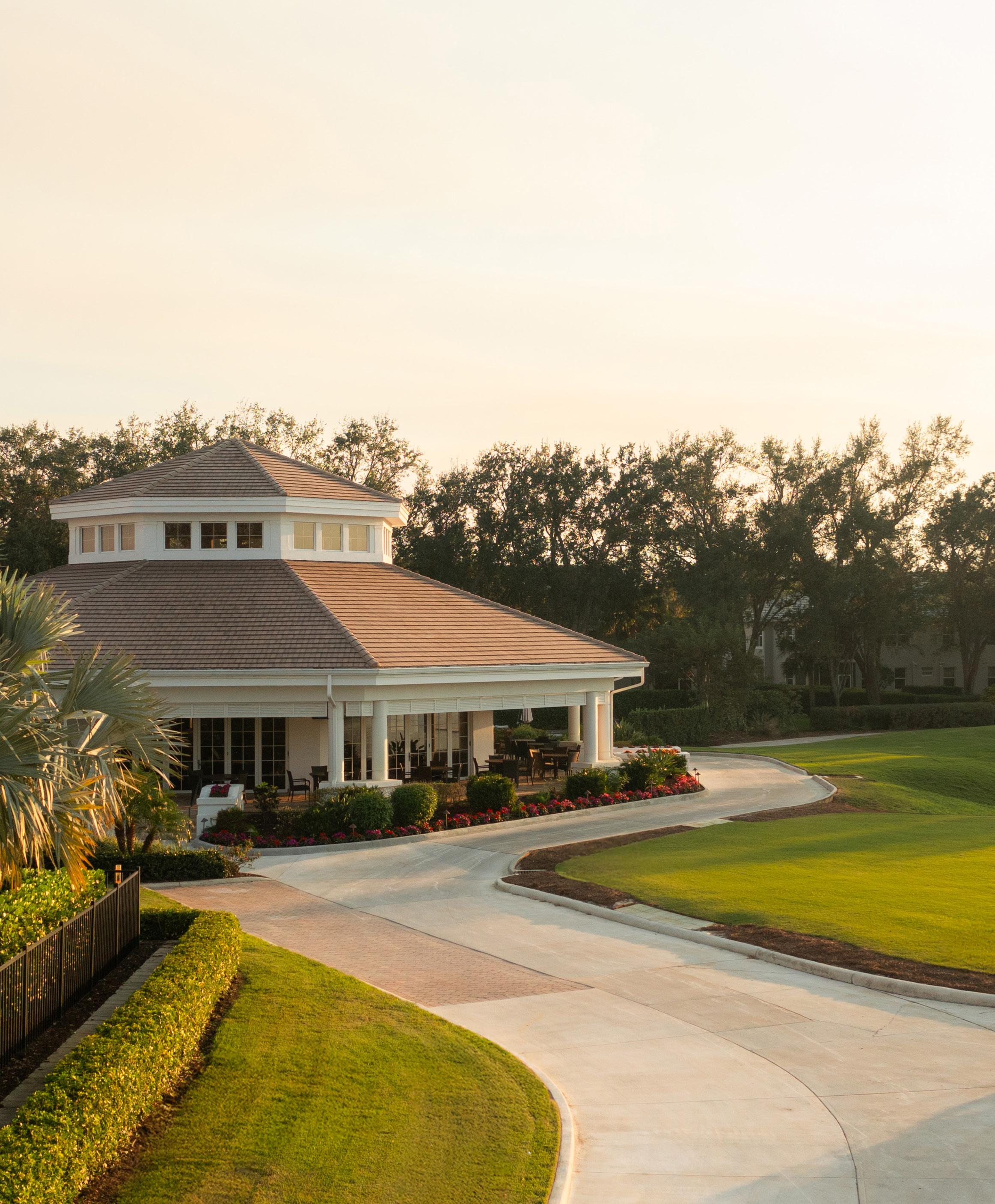










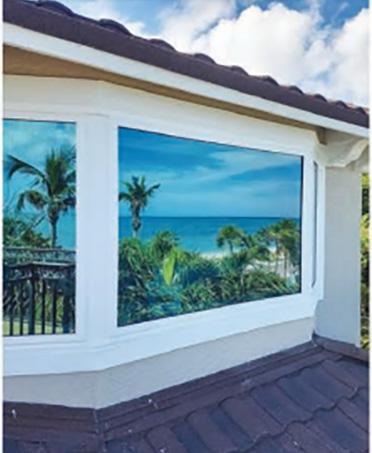
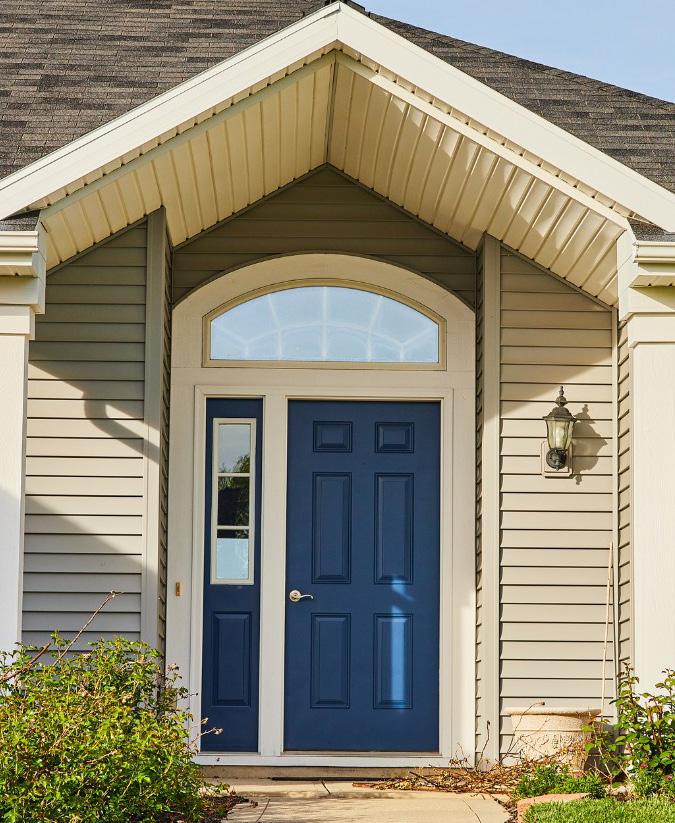


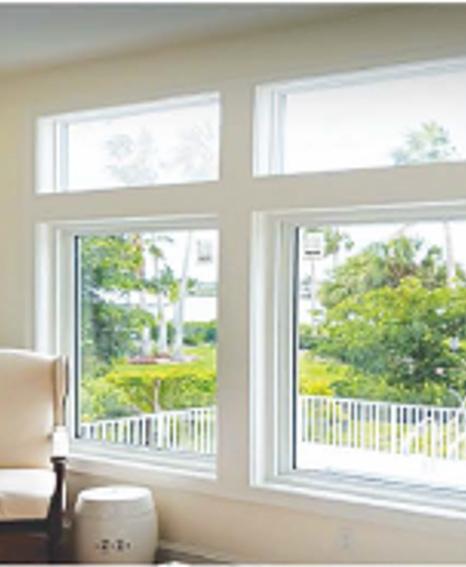





















There is a new game at The Club at Gateway that is gaining in popularity. It is called Hand, Knee and Foot.

Hand, Knee, and Foot has its origins in the card game Canasta, which first appeared in South America during the 1940s and became popular in the United States in the 1950s. The idea for Hand, Knee, and

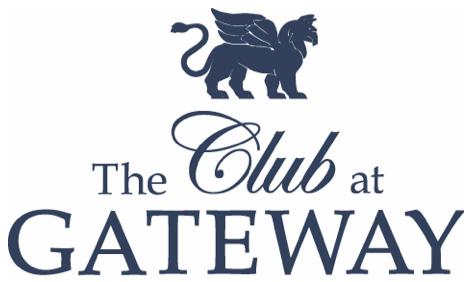
Foot came from Sue Henberger, who, while enjoying a game of Canasta with friends, thought of incorporating a third hand into the gameplay. This innovation led to the creation of Hand, Knee, and Foot. Henberger fine-tuned the game through various playtests and shared it with her local Canasta club, where it was warmly received. From there, the game’s popularity grew, eventually becoming a well-recognized variant of Canasta. Similar to Canasta, Hand, Knee, and Foot is usually played with several decks of cards and in teams, with the objective of melding cards and being the first to go out.
For more information on this game or other activities at the Club at Gateway, please contact Angie at (239) 561-1036, option 5.
Fitness doesn’t just encompass physical activity, but also nutrition. Maintaining a healthy diet is one of the most powerful ways to improve overall well-being and prevent chronic disease. A balanced, nutrient-rich diet not only supports a healthy weight but also fuels the body with the essential vitamins, minerals, and antioxidants needed for optimal function. From boosting energy levels
and enhancing mental clarity to strengthening the immune system and promoting better sleep, the benefits of healthy eating are both immediate and long-lasting. Whether your goal is to manage your weight, improve digestion, or simply feel your best, making smart food choices lays the foundation for a vibrant, resilient life. And don’t feel you have to give up the treats we all enjoy. It’s all about moderation.
Stubborn belly fat isn’t just a nuisance—it’s also linked to health risks like type 2 diabetes, heart disease, and inflammation. While exercise plays a

crucial role, what you eat has a significant impact on trimming your waistline. Here are 10 powerful foods scientifically shown to support fat burning, especially around your midsection.
Why it works: Avocados are rich in monounsaturated fats, which help reduce visceral fat (the deep belly fat surrounding organs). They also contain fiber and antioxidants that support digestion and reduce inflammation.

Production Directors
Stephen Miller
Elizabeth Miller
Sales Department
Tom English
Margo Williams
Laura Berrio
Bret McCormick
Miranda Ledbeter
Alyssa Debban
Justein Matthias
Anissa Stender
Webmaster
Selina Koehler
Production Manager
Lee Nostrant
Production Department
Elaine Donholt
Ruth Nekoranec
Katie Heystek
Dianne Strout
Karen Kalisz
Michelle Feeney
Andie Reynolds
www.seabreezecommunications.com
Bonus: Avocados promote satiety, keeping you full and reducing overall calorie intake.
Seabreeze Communications, Inc. does not endorse any advertising as it relates to the communities. Advertising is not screened by Seabreeze Communications, Inc.
All rights reserved. Reproduction or utilization of these contents in any form by any electronic, mechanical, or other means, including xerography and photocopying is forbidden without the written permission of the Publisher.
The Publisher is not responsible or liable for misinformation or misprints herein contained and reserves the right to accept or reject all copy deemed unsuitable for publication.

Why it works: High in protein and probiotics, Greek yogurt helps control appetite and improve gut health. A healthy gut microbiome is linked to lower levels of belly fat.
Pro tip: Choose plain, unsweetened varieties to avoid added sugars that can sabotage your goals.
Why it works: Salmon is loaded with omega-3 fatty acids, which help reduce inflammation and promote fat metabolism. It’s also a lean source of protein, essential for maintaining muscle during fat loss.
Fun fact: More muscle mass increases your resting metabolic rate, burning more calories even at rest.

Why it works: Green tea contains catechins and caffeine— both known to boost metabolism and increase fat oxidation, especially during exercise.
Drink tip: For optimal effect, drink 2 to 3 cups daily without added sugar.
Why it works: Eggs are rich in high-quality protein and essential nutrients like choline, which plays a role in fat metabolism. A high-protein breakfast (like eggs) reduces cravings later in the day.
Hack: Studies show eating eggs in the morning leads to greater
belly fat reduction than carb-based breakfasts.
6. Leafy Greens (Spinach, Kale, etc.)
Why it works: These nutrient-dense, low-calorie veggies are high in fiber, which keeps you full and prevents overeating. They also help regulate cortisol—a hormone linked to belly fat. Pairing tip: Add to smoothies or use as a base for meals to boost volume without added calories.
7. Berries (Blueberries, Raspberries, etc.)
Why it works: Berries are packed with antioxidants and fiber, both of which fight inflammation and promote fat burning. Their natural sweetness also helps curb sugar cravings.
Research highlight: Blueberries in particular have been shown to influence genes that regulate fat-burning and storage.
8. Nuts (Almonds, Walnuts, etc.)
Why it works: Healthy fats, protein, and fiber make nuts excellent for appetite control and metabolic health. Regular consumption is associated with a lower risk of obesity and belly fat accumulation. Watch out: Stick to 1-ounce portions, as they are calorie-dense despite their health benefits.
9. Chili Peppers
Why it works: Capsaicin, the active compound in chili peppers, increases
thermogenesis (heat production), which boosts metabolism and fat burning. It also suppresses appetite.

Study nugget: Some research shows capsaicin may increase calorie burn by up to 50 calories per day.
(ACV)
Why it works: ACV helps regulate blood sugar and insulin levels, which can reduce fat storage. Some studies show it helps decrease belly fat when used consistently.
Usage tip: Mix 1 tablespoon in a glass of water

before meals—don’t drink it straight to protect your teeth and throat.
There’s no single food that will magically melt belly fat, but incorporating these science-backed fat-burning foods into your daily routine can help speed up your results when combined with proper exercise and sleep. Focus on whole, minimally processed foods, and stay consistent for sustainable change.

Rich is a dedicated golf course professional with over 20 years of experience in the golf industry, having worked in Southwest Florida since 2002. His career includes leadership roles at several of the area’s most respected clubs, including The Sanctuary Golf Club on Sanibel Island, Pelican’s Nest, Pelican Preserve, Eagle Ridge Golf Club and Spanish Wells Golf & Country Club.

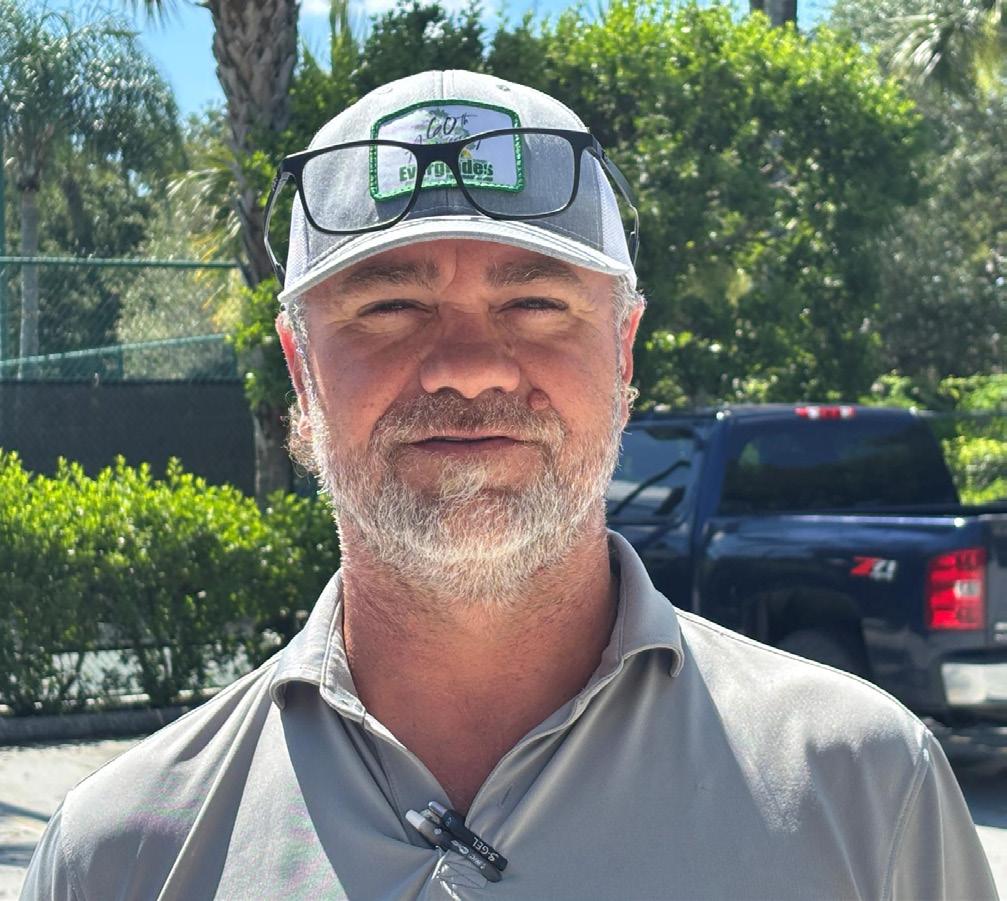
Rich studied Golf Course Operations at Lake City Community College and has remained passionate about golf course management and the game itself ever since. Raised in a Navy household, Rich had the opportunity to travel throughout the country and graduated from high school in Key West, Fla.
Rich has been married to his wife, Laura, for 26 years. Together, they have three amazing children: Owen, who played college soccer in Wilmington, N.C.; Olivia, currently attending the University of South Florida; and Obrie, a junior in high school.
Please help us in welcoming Rich when you see him around the club and on the course!

Ron and Ann Grimes shared this video of Ron’s daughter, Heather Neish, and her service dog, Digby. Digby is having a great time “working.” Check it out to see if you recognize the street. It’s heartwarming and worth watching twice!
video: Heather Digby VIDEO.MOV

We have had a great month of July with a successful Independence Day tournament despite the rain before the event. The golf course is in excellent shape after our first closure. We have one more closure August 11 through 19. We hope to see you at our Labor Day Golf tournament on September 1.
The Club at Gateway Performance Center has enhanced our ability to fit members and guests for the clubs they need, and has given us the opportunity to teach at a higher level with video analysis via Trackman. Even if you are not a member, please feel free to reach out to the golf shop to book a fitting or lesson with one our golf professionals.
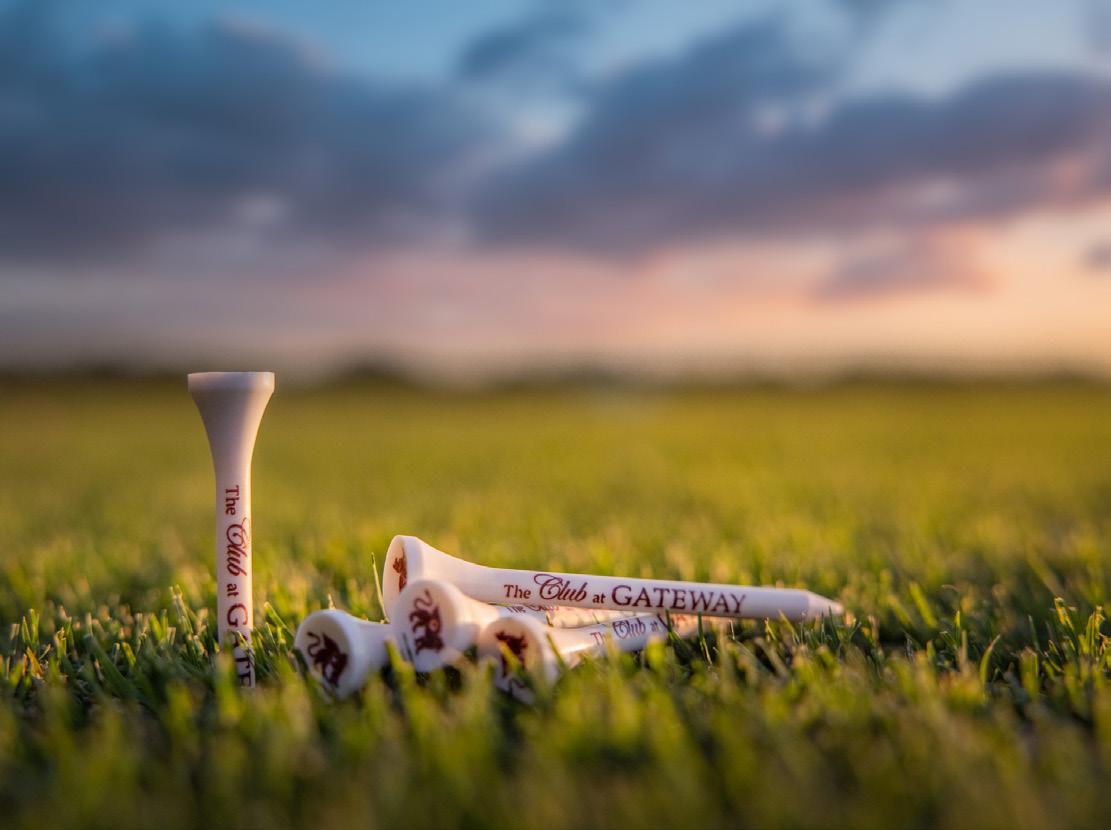

There are some very important fundamentals when you are chipping. Use these fundamentals while practicing to improve your chipping in minutes.
Choose the club you want to use by imagining the shot you want to hit. If it’s a higher shot, you need more loft. If it’s a lower running shot, you need less loft. One of the most important parts of chipping is deciding where you want the ball to land. All the best players in the world are looking at the point they want to land the ball because they have decided how they think the ball will roll after it lands.
Make sure you preset your weight 60% on your leg closest to the target at address. If you do this correctly it will lock your lower body so your upper body can control the swing.
With your weight 60% on your left, make sure the end of the grip is pointing at your belt buckle and your ball position is just in front of the middle of your stance. (Your hands should be ahead of the ball.) If you want to hit a lower chip shot you can move the ball back in your stance.
To control the tempo of your swing and therefore the distance of your shots, try to make the club head travel as far back, as it does through.
Make sure you accelerate the club through impact (this can be scary for some people). If you have the correct fundamentals this won’t be as scary because you will create spin and ultimately have more control of the golf ball. When these fundamentals are correct you will make the club bounce into the ball and brush the top of the grass.







In this tip I didn’t mention anything about opening stance or adding loft to your club. These are used for different shots – not a basic chip shot. If you would like to learn more about different types of chip shots and the techniques we use to hit them, please contact me at golfpro@gatewaygcc.com or members can log onto Foretees to book a lesson.





Travis Raque Director of Racquets at The Club at Gateway
When playing doubles tennis, effective net play is crucial for controlling the court and putting pressure on your opponents. One key tip is to maintain strong communication with your partner. Always coordinate your movements to cover the court efficiently, especially when deciding who takes the ball or when to switch sides. This synergy helps prevent gaps that opponents can exploit. Additionally, positioning is vital—stay active at the net with a slight crouch, ready to react to volleys and poaches. Keep your racket up and in front, minimizing reaction time and allowing for quick, sharp volleys.
Approaching the net effectively involves timing and shot selection. Ideally, approach after hitting a deep, well-placed shot that forces your opponents on the defensive, such as a strong cross-court groundstroke or a deep slice. This reduces their ability to hit an aggressive passing shot. As you move forward, take small, controlled steps to maintain balance and adjust your position quickly. Aim to close in on the net to cut off angles and create opportunities for decisive volleys, but be mindful of lobs and stay ready to retreat if needed. Mastering these strategies can significantly elevate your doubles game.

Dinks are an essential part of pickleball, especially for beginner players learning the intricacies of the game. A dink is a soft, controlled shot meant to land just over the net in the opponent’s non-volley zone, often called the kitchen. Mastering the dink helps beginners develop touch, control, and strategic placement rather than relying solely on power. This gentle shot forces opponents to move forward and respond with precision, reducing the chance of aggressive returns. By focusing on dinking, beginners can foster patience and learn to build points methodically, waiting for the right moment to execute a winning shot.
In the broader context of pickleball, dinks play a pivotal role in shaping a player’s overall strategy. The game often revolves around quick reflexes and fastpaced rallies, but the ability to slow things down with effective dinks can shift the momentum in a player’s favor. For beginners, incorporating dinks into their gameplay not only enhances control and accuracy but also helps in understanding court positioning and anticipating opponents’ moves. As players become more comfortable with dinking, they gain a critical skill set that balances offensive and defensive play, making them more versatile and effective on the court.

JANICE EATON, LAUREL BORGIA, MARIANNE KOLLASCH AND DONNA MARCHETTI
GATEWAY WOMEN’S CLUB WELCOMED
DR. THOMAS FELKE
STEPHANIE MENA AND DEBBY STEPHANO
Dr. Thomas Felke, Ph.D., recently addressed the Gateway Women’s Club. Dr. Felke is chair of Shady Rest Institute for Positive Aging (SRIPA) and professor of Social Work at FGCU. Shady Rest connects faculty, staff and students from across
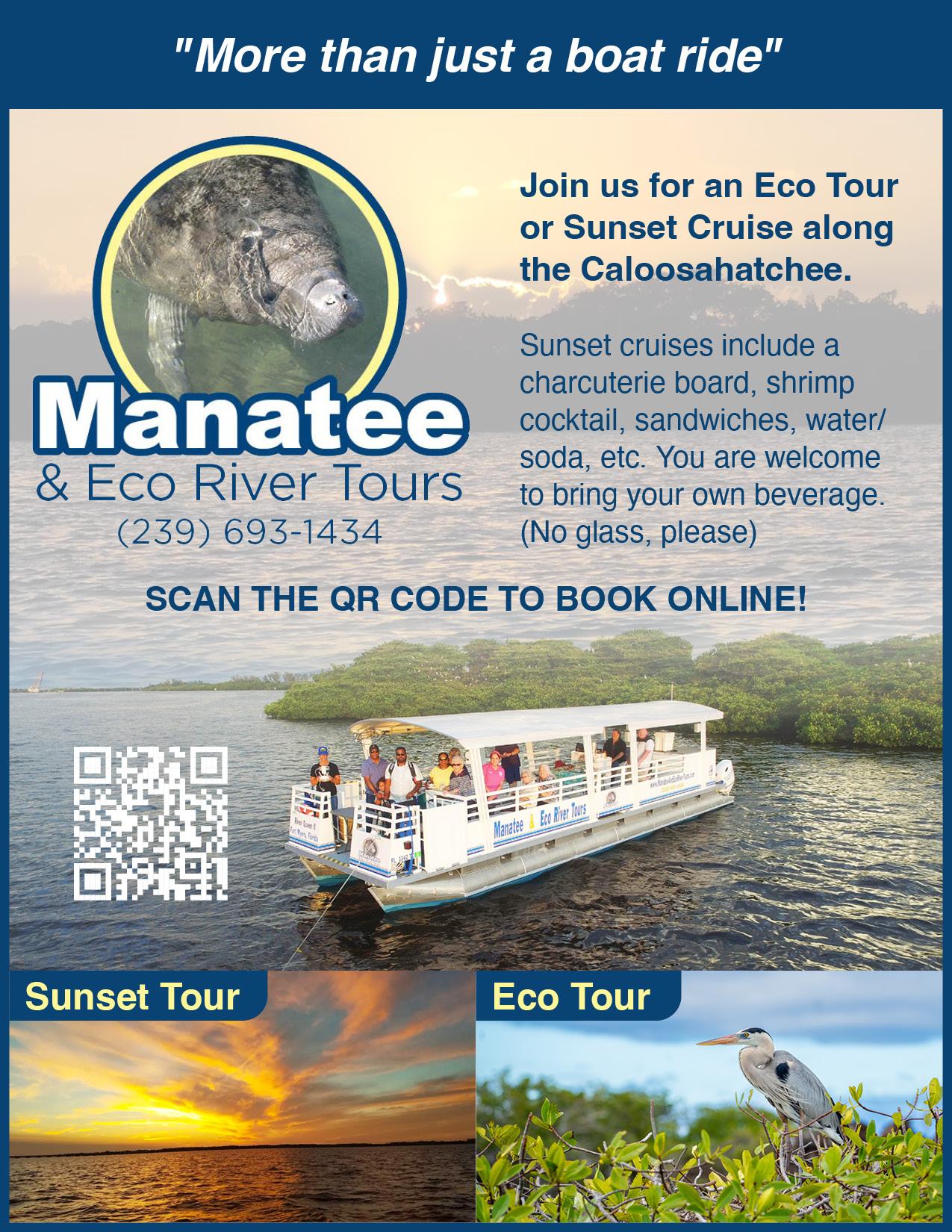
academic disciplines at FGCU with community organizations in a unified purpose of supporting the older adult community through education, service, research and advocacy in Southwest Florida. SRIPA makes aging and thriving in place possible for Southwest Florida seniors. Felke is a recent recipient of the Lifetime Achievement Award from the National Association dedicated to Social Work in Florida.
We must do our part to remain healthy both physically and cognitively, by staying socially connected and adopting a positive mindset. FGCU and SRIPA serve as a hub to strengthen existing senior resources already in place, develop and educate the current workforce on ways to improve the lives of seniors, investigate issues and use data to champion change.
The older adult population in Florida is growing at an astronomical rate. Sixtythree per cent are women. Studies show many seniors in SWFL struggle with issues like poverty, food insecurity and social isolation. These feelings can lead to stress, anxiety, mental health decline and poor dental care. Shady Rest Institute on Positive Aging makes
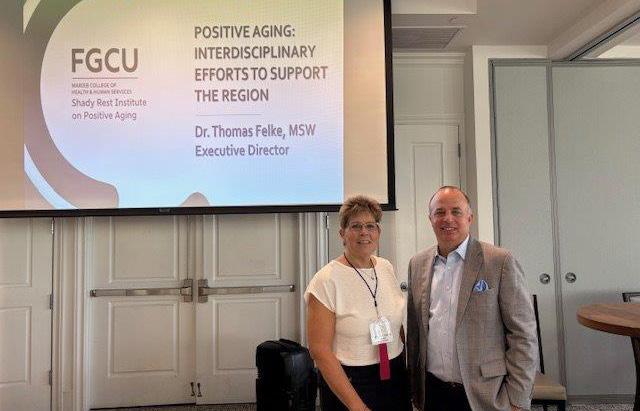

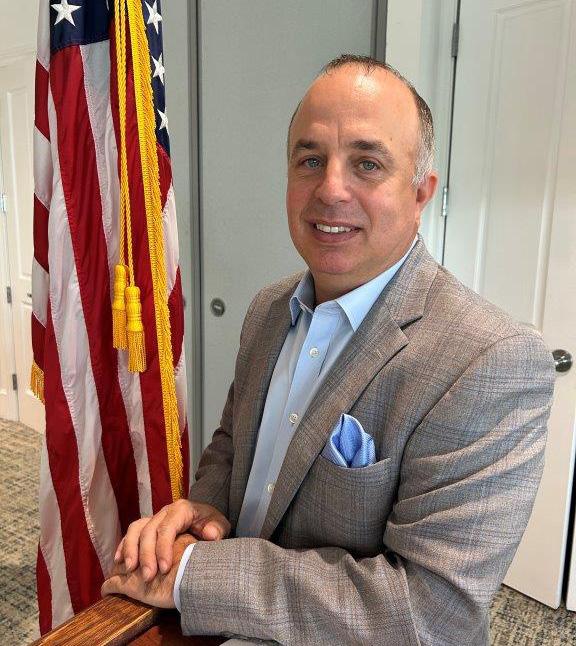
a difference. Areas of Focus include workforce development, community engagement, translational research, policy and targeted needs of older adults. Senior Care Partner is just one of the many programs offered.
The Cognitive Health Screening Project is open to interested seniors. This program provides free health screening to the community through a 10-minute self-administered, digital cognitive assessment. It is focused on overall cognitive health and is designed to detect cognitive impairment. This screening is intended to be comparable to annual vision screening. The Cognitive Health Screening Project is FDA approved and
scientifically backed by over 50 clinical research studies.
The Shady Rest Foundation awarded FGCU $4.1 million in scholarship funds for students in nursing, physical therapy, occupational therapy, physician assistant and social work degree programs. The goal is to expose more FGCU students to a variety of careers in the healthcare field and the benefits of working with the senior population as a rewarding career.
DR. THOMAS P. FELKE, MSW PROFESSOR, ASSOCIATE DEAN FOR ACADEMICS IN THE MARIEB COLLEGE OF HEALTH AND HUMAN SERVICES, AND EXECUTIVE DIRECTOR AT THE SHADY REST INSTITUTE FOR POSITIVE AGING AT FLORIDA GULF COAST UNIVERSITY
For further information, call (239) 590-7841 or contact SRIPA@fgcu.edu or https://fgcu.edu/mariebcollege/aging
JAN HARTZELL
The GWC Book Club will meet on August 12 at 7 p.m. This month’s hostess is Carol Brown, while her cohostess will be Alexis Roosa. The discussion facilitator will be Mary Anderson. The novel the group will be talking about is called Atomic Love by Jennie Fields.


Rosalind Porter, 30, is an extremely clever young woman, so much so that she works on the Manhattan Project with Enrico Fermi. She has a love affair with British scientist Thomas Wheeler who ultimately lets her down and gets her sacked from the work she loves. Why? It is now 1950 and she’s working at Marshall Fields in Chicago retailing antique jewelry. She becomes aware she’s being followed though he’s not very good partly because he’s so darned tall! This proves to be FBI Agent Charlie Szydlo who tells her a startling story about Wheeler.
Please email or text Carol by August 10. Her information can be found in the GWC Directory. You will need a number to enter the gate at Silverlakes.


The next Sit and Stitch meeting will be hosted by Robin Beatty on August 11 at 1 p.m. Please contact Robin if you plan to attend. Her information can be found in the GWC Directory. The group includes many GWC members working on different projects. The members are still working on projects for hospice and scarves for college-attending students who were in foster care. Any GWC member is welcome to join.

Bridge 101 will meet on August 5 and 19 at Hampton Park Amenity Center at 10 a.m. Please contact Susie Kravetz by phone or email, to let her know if you are attending. (her information is in the directory). We need a number count, and she needs to give your name to the gate. We welcome anyone who plays bridge.

Our local restaurants and small businesses remind us that every success story started with a single idea and a leap of faith. When we actively support those who chase their dreams, these amazing restaurants and small businesses can thrive.
Inspired by a story of grit and determination, Gateway Women’s Club recently showed its support for local Chef and Restaurateur Melissa Donahue with the reopening of Sweet Melissa’s. The restaurant, previously located on Sanibel Island, was ravaged by Hurricane Ian. Yet, sometimes, the winds of change carry us in a new direction. Such was the case with Sweet Melissa’s plight. Undeterred by Ian’s destruction, Sweet Melissa’s reopened its doors two and a half years later in its new location at 16230 Summerlin Road in Fort Myers.


Chef Melissa explained that she has always faced challenges head on. For example, when the pandemic tested the resilience of restaurants everywhere, Sweet Melissa’s used imagination and innovation to stay afloat. Unfortunately, after weathering that storm, Hurricane Ian destroyed the Island’s iconic restaurant. Chef Melissa pressed forward. And like a breath of fresh air, Sweet Melissa’s doors have been opened to diners of Fort Myers.
It is no wonder that Chef Donahue is a celebrated chef, appearing

on The Food Network in an episode of Beat Bobby Flay and receiving other accolades, culminating in a nomination for the prestigious James Beard Award. Notably, she was the first chef from Lee and Collier counties to be nominated for this honor.
Gateway Women’s Club was treated to an unforgettable meal at Sweet Melissa’s. The specially selected menu for the group included fresh, seasonal ingredients in its innovative seafood dishes and pork chops. The menu also included a variety of small plates
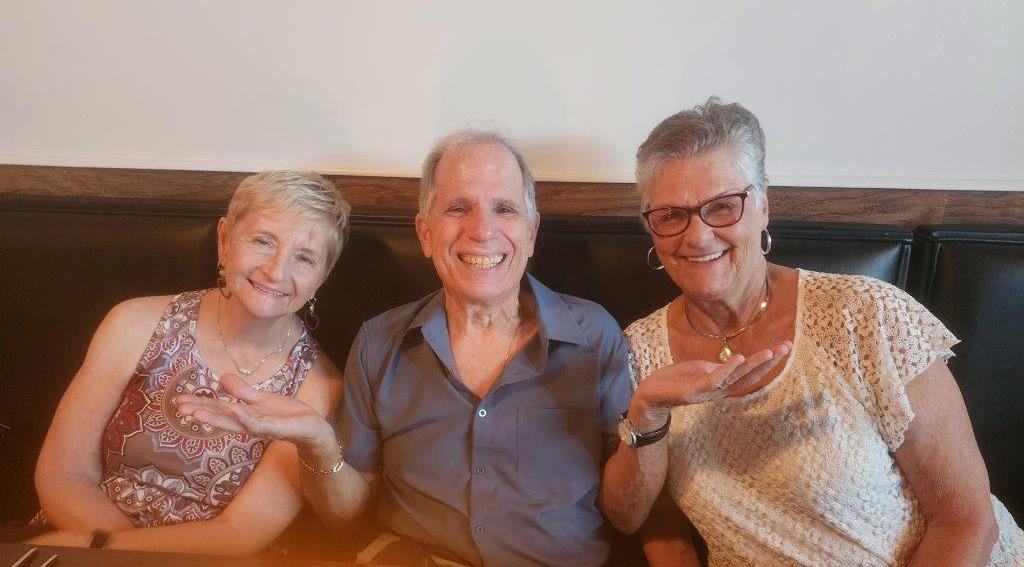

and starters such as mussels, shrimp and grits, watermelon salad, and grilled Caesar salad. The Dining Out group also indulged in a variety of mouthwatering desserts, including one of Chef Melissa’s specialties – Banana Pecan Strudel served with Caramel Gelato. It was the perfect way to end the meal!


The inviting ambiance of Sweet Melissa’s created the perfect backdrop for a night out with friends, where gatherings turn into cherished memories. The evening also reminded us that even when challenges seem insurmountable, the journey of a thousand miles begins with a single step.


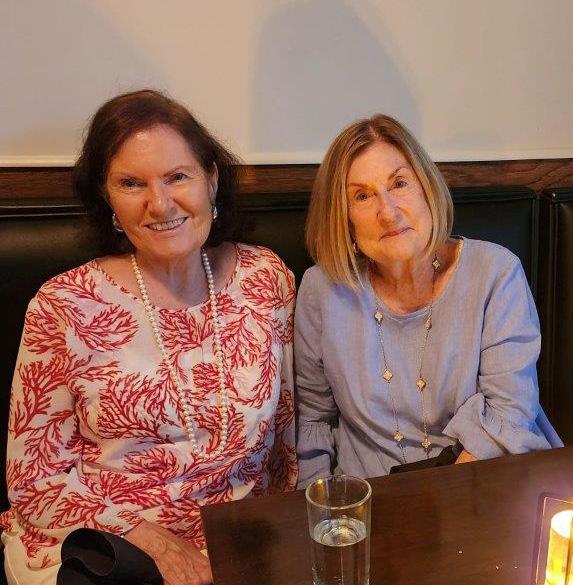


Lee Health Education, Training and Development Center at Gateway, 12451 Gateway Blvd. is looking for someone to perform the following duties:
• manning the reception area
• greeting and directing staff
• helping with packets and other duties
Home Health, 12801 Westlinks Drive, needs a volunteer to help set files, put together packets, file, and stuff envelopes.

If you can spare four hours a week and would like more information about these positions, contact our Volunteer Resources Office at (239) 343-0636.


DR. MARK P. GONZALES, EXECUTIVE DIRECTOR, ROYAL PALM ASSOCIATION OF CHURCHES, SBC
Lindy and I have lived here in beautiful southwest Florida for 35 years, and there are so many things for which we are grateful. There is the exception of the occasional hurricane, of course. But as for our summer storms that start with billowing white clouds by noon that slowly morph into gray, navy, then rumbling black clouds with rain, wind, and a little lightning by late afternoon—just gotta say, we love them!
These storms are breathtakingly beautiful, when you stop and think about it. Majestic. Powerful. Dramatic. Creative. And even peaceful. A wondrous mosaic of sight, sound, smell and feel. Reminds me of these lyrics from “How Great Thou Art.” I see the stars, I hear the rolling thunder, Thy power throughout the universe displayed. Ahhh . . . But wait.
When it comes to those thunderous storms, it dawns on me that our sense of peace usually comes only when we view them from the safety of a cozy, covered lanai or inside our homes, right? But what if a storm catches us by surprise at an outdoor picnic, a walk in the wild, or a small boat on the gulf? Not so beautiful or

peaceful anymore. In fact, it can be frightening. Even overwhelming. But it’s the same kind of storm. Huh.
That brings me to the classic metaphor of the storms of life—globally, locally, and internally. Every one of us is impacted by these storms. In all candor, recently, I’ve had a few weeks when I sometimes would wake up with a heart full of dark clouds, and maybe you have, too. And with good reason.
We’re living with harsh realities on a global scale with all types of wars, destruction, oppression, political polarization, cultural discord, economic uncertainty, rampant distrust of authority, and so much more.
In my circle, a colleague of mine recently lost his precious wife of many years and asked me to officiate her memorial service. A few days later, a very close friend and his family experienced the sudden death of their 18-month-old grandson. My dear wife and I are wrestling with multiple health issues like many of you in our respective life journeys. And many of the pastors
and churches I work with have scores of people dealing with tremendous challenges. But that would be all of us, wouldn’t it? It’s just real life.
So, how can we deal with these storms? How can we find any peace with the sobering thought that we really can’t control the size, frequency, or strength of life’s situational storms any more than we can control any literal storms? What do we do when we find ourselves struggling and focusing on the internal storms of fear, anger, resentment, bitterness, rejection, guilt, regret, distrust, insecurity, exhaustion, hurt, frustration, grief, despair and more?
Well, here are the whispers of God that I hear when I’ve let my eyes focus on the storms instead of on Him – like Peter did when he started out walking on a stormy sea but then began to sink when he focused on the wind and waves instead of on His Lord and Savior. I love how the Lord doesn’t scold us when we do that. He whispers gently and personally to get our attention, especially when He calls out “son…,” or “daughter…,” or even calls us by name. “Mark…”
“Practice My Presence…”
This is when He reminds us that He is always there for us. Always. He will never leave us or forsake us. Though there are days when it may feel like He has, it’s not because He’s not there or doesn’t care.

It’s because we’ve lost sight of Him in the darkness. That’s when we can practice His presence by shifting our gaze back onto Him – as our refuge, our fortress, or lanai. And that’s where we can wait with Him for the storms to pass or walk with Him and help others make it through the storms . . . either way… His choice … but in His peace. Amazing.
“Savor My Whispers…”
The Lord loves to whisper His wisdom and love from His heart to ours. And He does so frequently. But our lives and hearts can get so noisy, we miss them. That’s why the Scripture says: “Be still, and know that I am God.” But don’t let the whispers come and go when you hear them. Savor them, like you do with bites of your favorite meal. That’s how His peace can go deeper.
“Embrace How I Love You…”
The more we discover and embrace how He loves us far more than we can imagine, the more our lives will continue to be transformed from the inside out with a peace that endures. Like the unbridled love a mom and dad feel when they first hold their newborn child, that’s how the Lord loves us. Even
The Montage Women’s Club is a social and philanthropic club open to all women residing in Lee County. We normally meet on the fourth Thursday of each month. Our August meeting will take place at the Hilton Garden Inn (Captiva Ballroom), 12600 University Drive, Fort Myers 33908, corner of College Parkway at the Summerlin Road overpass. Meetings begin at 11:30 a.m. with a short social period followed by lunch at noon followed by an informative speaker program and a short business meeting. Within the organization are various interest groups for members’ participation. Membership is open to both year-round and seasonal residents. We welcome you to visit Montage for a luncheon.
Our next meeting will be held on Thursday, August 28. Normally we have a speaker after lunch, but there is a special fun group activity planned for our club members to enjoy this month.
Luncheon fee is $30 per person, and you have a choice of either a regular menu entree (a Cobb Salad with Chicken and Chef’s dessert choice) and/or a plantbased/vegan entree (a Cobb Salad with roasted vegetables and tofu with a fresh fruit cup for dessert) in August.
If you would like to attend a Montage meeting, need further information, or would like to make a reservation, please call Rita Artwohl at (239) 703-7787. Reservations cutoff to attend this meeting is noon, Thursday, August 21.
when we mess up. Especially when we mess up. We will always be works in progress. And He never gives up on us.
“Follow My Ways…”
He yearns for us to trust and follow His ways. Not because He’s on a power trip, but because He knows that His ways are the best ways and, therefore, the best for us. When Jesus said: “Be my disciples…” the word “disciple” actually means “follower.”
We don’t have to follow Him. We get to follow Him. Because He is good. He is trustworthy.
“Go Share My Heart…”
Jesus also said: “Go therefore and make disciples in all nations…” We call that the “Great Commission.” True believers love to share the “gospel” or “good news” about the love of God with others and the opportunity to follow the Lord and His ways. And why not? He is the God who draws us, saves us, and heals us from the inside out, so that we can, indeed, experience His peace in the midst of the storms. What a Savior.
Walking through storms with you and Him, Pastor Mark (mark@quillpress.org)
Articles, videos and podcasts: markpg.org. Write and share at mark@quillpress.org. Hear me every Saturday, 8 a.m. on 91.5 FM.
1. Bowed stringed instrument
Perpendicular to the keel
Birdlike 12. A used automobile tire
Bank line
Game plan 17. Hebrew liquid measure
18. Music event
20. Right after nine 21. Footnote note
23. Breezy
24. Banquet
25. Individual 26. Small
27. Metal used in brass 28. Racing sled
29. Type of cereal grass
30. Damp
Infernal region
Smell
Local Area Network
Mid-month days
Throw
Stopper
Informer
Vesicle
Distinctive flair 46. Abominable Snowman 47. French for “friend” 48. Blabber
Can 52. Hemicrania 54. Assault 56. Remorseful act

57. Trap 58. Perspiration 59. Nymph chaser DOWN 1. Large deer 2. After sunset 3. Top 4. Nonclerical 5. Be aware of 6. Blood vessel 7. Fruit on a bush 8. French for “state” 9. Paintings
10. Conference 13. Bureau 14. Physics unit 15. Cool down 16. Sparkle 19. Water nymph
22. Most profound 24. Ennoble

26. Legal wrong
27. Animal house
30. Croon
32. N N N
33. Mock
34. Frustrate
35. Signs jointly
38. Food-related
39. Siren
40. Shiny lizard
42. World
44. Tent-pitching place
45. Genus of heath
48. Glazier’s unit
49. Young woman
50. Europe’s highest volcano
53. Uncooked
55. Make lace
CROSSWORD SOLUTION IN THIS ISSUE
CAPT. BILL RUSSELL
On the water around Southwest Florida in August means dealing with steamy hot weather and the possibility of daily thunderstorms. Fishing can be good for the month If you don’t mind working around the weather.
Summer days give us flat calm seas over the morning hours, perfect for running offshore. Our coastline is dotted with man-made artificial reefs, many well within sight of land with GPS coordinates available to the public. If you are an inshore angler, it’s a nice change of pace to make a short run offshore, especially during the heat of summer when the inshore water temperatures are so high.
Fishing around the reefs, you never know what you might hook into. Everything from tasty snapper to huge goliath grouper call the reefs their home. To get the most out of the day you want an assortment of tackle that can manage the fish you target and any surprise guest. Obviously with snapper you do not need super heavy tackle, the lighter the better for the best action. But, if you want to attempt to pull a big goliath grouper from his home you will need an extra heavily rig, we are talking 2- to 400-pound line. And many times, that’s not heavy enough. Big goliaths are protected and must remain in the water and released unharmed.
In between snapper and goliaths is the possibility of Spanish and king mackerel, cobia, permit, barracuda,
snook, grouper, sharks of all sizes, plus many other species. A common method is to anchor up, deploy a chum bag, and fish several different line class rods and baits for a variety of fish.
Inshore sea trout fishing is good through the summer. Look for larger trout over areas of open water where shallow sandbars transition to deeper grass flats from 3 to 6 feet deep with good water movement. Schools of small baitfish concentrate in these areas. Trout, plus Spanish mackerel, bluefish, ladyfish, and sharks are located around the bait. Diving pelicans, terns, and gulls often give up the location of schooling bait.
Mangrove snapper fishing is a good choice throughout the inshore and nearshore waters. They gather around structure with good water movement; this could include any of the Gulf passes, docks and jetties, bridges, piers, and natural or man-made reefs. For bait, live shrimp, pilchards, and small pinfish are the ticket, plus small pieces of cut bait. Snapper have excellent vision, a small circle hook with 3 to 4 feet of 10- to 20-pound fluorocarbon leader will put the odds in your favor. Snapper are hard fighting for their size and are one of the absolute best tasting fish in our waters. If
you have visitors over the summer, snapper can make a great target and reward you with a fine dinner.

Good numbers of snook are roaming the surf along the Gulf beaches throughout the summer and are a sight fishermen’s dream. Most snook are under 26 inches, but there are much bigger fish mixed in. Pilchards, herring, small pinfish, oneeighth, or quarter-ounce white bucktail jigs, and a variety of small white flies are top baits. Look for the fish right off the edge of the beach in the surf or near any type of submerged structure. Remember, snook are catch and release only, quickly return them to the water. Snook, like most fish, are most active early and late in the day over the summer months.
Stay up to date with fishing regulations by visiting the Florida Fish and Wildlife Commission at: www. myfwc.com. Also, upload the Fish Rules app on your phone. It has current regulations with pictures to help identify fish. If you turn on your GPS location the Fish Rules app updates to your location. In my opinion, it is more accurate and up to date than FWC’s website.
Whatever type of fishing or water activity you choose, be smart, drink plenty of water, and watch those thunderstorms.
For charter information, please contact us at Gulf Coast Guide Service and “Catch the Action” with Capt. Bill Russell, call or text (239) 410-8576, website: www.fishpineisland.com , email: gcl2fish@live.com .
Capt. Bill Russell is a native and lifelong resident of Pine Island who has spent his entire life fishing the waters surrounding Pine Island and Southwest Florida. For the past 29 years, Bill has been a professional fishing guide who takes pride in customizing each trip to ensure everyone on board has a great time and will return again. Come join us and “Catch the Action.”

KAREN M. MAXWELL, HORTICULTURE PROGRAMS COORDINATOR AND HORTICULTURE SPECIALIST
Thomas Edison had many research beds on the south side of the property, teemed with goldenrod, rubber vine and crown-of-thorns. These, and more, were planted in the late 1920s to 1930s by the Edison Botanic Research Corporation and were tested for latex content.
At one time, there were at least 160 beds, each measuring 5 feet by 20 feet. Prior to the exuberant research done for domestic tire rubber, Edison, the chemist, explored many plants for other uses. In addition to his filament research, Edison sought a way to insulate wire, something important to Henry Ford’s work.

efforts to develop a machine to strip the leaves off oleander branches. His efforts produced a machine that stripped 20,000 plants in eight hours, which he deemed too slow, failing to meet his own goal of 160,000 plants in eight hours – and thus he abandoned this project.
Amongst the many euphorbias and ficuses, another latex-bearing plant was considered – the oleander. Historical purchase records indicate that Edison purchased oleander as early as 1909 from the Tampa Floral Company. A little-known piece of Edison’s work history in Fort Myers included his
Oleander is the only species in the genus Nerium, part of the Apocynaceae or Dogbane family of plants, which includes plumeria, desert rose and Madagascar periwinkle. Interestingly, the extensive plumeria collection occupies part of the original research bed site. In addition to all exuding latex, they share another characteristic that will be discussed later in this article.
This is the time of year – through to autumn – when oleanders punctuate colorful summer landscapes, complementing royal poincianas and crape myrtles. The University of Florida (IFAS) information sheet on oleander calls out the “bad girl reputation” of this easy-care shrub but makes the case for thoughtful inclusion in a Southwest Florida garden.
Before going further, I want to address the well-known issue of toxicity of oleander. Nerium comes from an ancient Greek word for water, where they naturally grow along rivers and streams. Oleander is a modern derivation from ancient Greek, meaning “to kill.” In the shadow of Mount Vesuvius, close to Naples, Italy, the tree is called “Fiori di Morto” (flower of the dead). All parts of this shrub or small tree are considered toxic to humans and domestic animals, though apparently not so to rodents. But, to provide context, over 90% of ornamental plants are irritating, if not toxic, to humans and pets. The actual number of deaths from ingesting oleander is very low in the U.S. and perhaps that is a credit to the awareness most people have of its toxicity.

OLEANDER IS A HOST PLANT FOR THE OLEANDER MOTH. CATERPILLARS WILL EAT THE LEAVES BUT WILL NOT KILL THE PLANT.
In ancient Greece, the oracle of Delphi, a high priestess known as Pythia was remembered for her divine frenzies, purportedly brought about by ingesting bay laurel. Researchers have since realized that oleander was at one time called laurel, but the bay laurel that grows alongside the oleander does not harm humans, leading to the conclusion that Pythia was probably ingesting oleander, which induced her inspired epiphanies.
Some people have even expressed concern that honey made from oleander contains toxins. Though pollination of oleander flowers requires the assistance of insects to set seed, their flowers, in fact, do not contain any nectar, thereby eliminating this concern.
For the reasons they flourish in the Mediterranean region, perhaps oleander has a home in your Southwest Florida landscape. Fast growing, these hardy, evergreen trees will not annoy the tidy gardener with messy leaf drop. They love full sun and will tolerate a small amount of shade. While regular


THE OLEANDER MOTH HAS VERY VIBRANT COLORS. THE CATERPILLARS LOOK SIMILAR TO THE GULF FRITILLARY CATERPILLARS.
watering will improve bloom production, they are quite capable of thriving during extensive periods of drought and can handle almost any well-drained soil. Of note, is their salt tolerance, making them a colorful choice for coastal landscapes.
Should temperatures plunge into the 20s, oleander may die back; however, given time, the roots will soon resprout new growth. Oleanders take well to pruning after flowering to maintain either their height or a nice shape to prevent them from becoming leggy.
Today, there are more than 400 hybrids of oleander, including single flowers, double flowers, fragrant and dwarf varieties, such as “Petite Pink,” which is planted in the median strip on McGregor Boulevard, between both sides of the Estates. Oleander was introduced to the United States in 1841 through Galveston, Texas, and the Oleander City still celebrates that heritage with an annual festival in April.
In addition to Edison’s interest in the botanic elements of oleander, it was also planted as part of the dense landscape surrounding the Ford home.
Given its size, it was probably already there when Mr. Ford purchased the home in 1916. Today, one can view the collection of Nerium oleander that graces the Ford property, along the McGregor fence line, which includes single white flowers and a double pink, “Mrs. Isadora Dyer.”
What are good companion plants for oleander? As a native of the Mediterranean, comparable foliage that enjoy full sun, welldraining soil and are somewhat drought tolerant would include rosemary, lantana, yarrow, and agapanthus. Marigolds will do well for winter or spring color and may aid in repelling oleander moth caterpillars.
When an insect is named after a plant, that’s an important indication of the plant being a host. Earlier in this article, I referenced a characteristic that the oleander tree shares with its botanical cousins. It’s this little bugger – the caterpillar of the Oleander Moth, sometimes called the Uncle Sam

You might get an email or text that seems to come from Apple, Microsoft, or Google, saying you’re out of storage. The message looks legit, and you might think there’s a chance you need more cloud space, but your scam-radar is going off. How can you be sure the link to upgrade isn’t a scam?
If you don’t even have cloud storage with the company emailing you, that’s the best clue that the message as a phishing scam you can report and delete.
But if the message comes from a company you do use for cloud storage, contact them directly. But don’t click the link in the message. Instead, use a number or website you know to be real — or log into your cloud account to see if you really need more cloud space.
Moth due to its color pattern. The orange caterpillar with black hairs can easily be mistaken for the Gulf Fritillary caterpillar if one doesn’t realize that it’s the wrong host plant. The Oleander Moth also will host on desert roses (Adenium), plumeria (Plumeria) and periwinkles (Catharanthus) –all members of the Dogbane family.
As an aside, a second oleander is noted in the historical records of plants grown on the Edison property. Not a true
Scammers often create phishing emails designed to trick you into clicking a link. Their goal? Steal your personal information or install malware on your device. So, if you suspect a phishing scam:
• Forward the email to the Anti-Phishing Working Group at reportphishing@apwg.org.
• Report phishing text messages on the messaging app you use or forward the text message to SPAM (7726).
• Report the phishing attempt to the FTC at ReportFraud.ftc.gov.
Learn more about how to protect yourself from phishing attacks and how to block and report spam text messages .
oleander, records identify the plant as oleander (Thevita neriifolia), though today its botanical name is Cascabela thevetia. With beautiful starburst-like foliage, the lucky nut appears throughout the Estates and, again like the other members of the Dogbane family, it is as poisonous as its oleander cousin. The lucky nut only has yellow flowers, generating its other common name of yellow oleander.
The Garden Shoppe staff at the Estates are always happy to help answer any questions that visitors may have. We hope to see you soon!
The Gulf Coast Humane Society has broken ground on a new state-of-the-art veterinary clinic that will provide lifesaving treatment and expand access to care for countless Southwest Florida pets who might otherwise go without.
Located at 2010 Arcadia St. in Fort Myers, the future clinic will serve as a critical resource for wellness services, spay/ neuter surgeries, dental care and medical treatment for pet owners as well as shelter pets who require medical care before they can be adopted. The 10,000-squarefoot medical center will be equipped with the latest veterinary technology, eight spacious exam rooms, and dedicated areas for veterinary specialists, surgical procedures and more.


As the region’s oldest no-kill shelter and veterinary clinic, the Gulf Coast Humane Society is dedicated to giving every pet a chance at a healthier, happier life. Last
year, the organization saw 10,026 owned pets in its community clinic, performing 9,050 spay/neuter surgeries and providing 9,296 additional medical treatments. With Southwest Florida’s rapid population growth and the increasing cost of living, access to affordable, high-quality veterinary care is more critical than ever.
“Our dedicated veterinary team works tirelessly to ensure shelter animals are healthy and ready for adoption while providing pet owners with an affordable option for veterinary care. As the need continues to grow, we know we can do even more,” said Darcy Andrade, executive director of the Gulf Coast Humane Society. “By investing in affordable veterinary programs GROUNDBREAKING

that empower pet owners with the resources they need, we aim to prevent suffering before it begins, keep pets with their families and reduce the number of homeless animals in our community.”
To meet the rising demand for care, the expansion will double the organization’s capacity to serve pets in need. By bringing advanced veterinary care inhouse, Gulf Coast Humane Society can treat pets with complex medical needs without referring them to outside specialists. This ensures continuity of care, reduces stress for pets and improves recovery times for shelter animals.
The clinic will increase the organization’s ability to support rescue partners across the state that lack the resources to provide medical care before placing animals for adoption. Additionally, it will serve as a training hub for future veterinary professionals, equipping the next generation with the skills they need to excel in animal welfare and community veterinary care while attracting top veterinary talent to the region.



The expansion is made possible thanks to the generosity of donors through the Paws for Wellness: Building a Healthier Tomorrow campaign – a compassionate endeavor to expand affordable, high-quality veterinary care services at the Gulf Coast Humane Society. The organization is calling for the community’s support to help reach its goal of raising $12 million to build the new clinic.
“Our goal is to expand access to veterinary care for pets and the people who love them,” said Dr. Alana Canupp, medical director for the Gulf Coast Humane Society. “This new clinic isn’t just about a larger facility or advanced technology – it’s about ensuring every pet, whether in a home or shelter, gets the care they need to live a healthy life.”

Slated for completion in spring 2026, the project is led by Stevens Construction, including Project Manager Jeff Faluade, Superintendent Joey Gill and Project Administrator Morgan Thie. Additional project partners include GMA Architects & Planners and RESPEC.
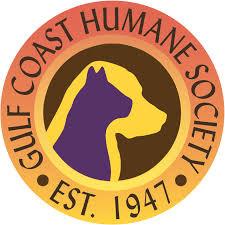
To learn more about the future veterinary clinic or for ways to support the Paws for Wellness: Building a Healthier Tomorrow campaign, visit GCHSPawsforWellness.org .
To learn more about GCHS, visit GulfCoastHumaneSociety.org .

Home burglary resulted in the loss of over $3 billion in 2019 and, according to a recent collegiate study, a home burglary occurs every 15 seconds in the United States and that someone is at home 27.6% of the time.
Disconcerting?
While these crimes have decreased in Lee County, our agency continues to emphasize the proactive measures that can be taken to reduce or eliminate the likelihood of victimization.
The addition of security cameras goes a long way toward preventing criminal activity and assisting in the investigation and prosecution of criminal offenses. Video doorbell cameras and strategically placed external cameras often dissuade would-be criminals.
Exterior lighting is perhaps the easiest and most inexpensive way to discourage criminals. Welllit areas increase visibility through windows, improve video surveillance quality and make your home a less desirable target.
Landscaping is a wonderful way to add “curb-appeal” to your home. Unfortunately, overgrown shrubs and trees that block windows and doorways or cast large shadows allow criminals to move about your property
without being seen. Additionally, unmowed lawns often give the impression that the homeowner is away.
Upgrading door and window locks, as well as securing sliding glass doors, will prevent easy access to your home. Most sliding glass doors have poor quality locks. They are susceptible to pry bars, hammers and screwdrivers and can usually be opened rather easily. Secure these doors using security bars, pins or upgraded locks.
Whenever you leave your home … even if just to quickly visit a neighbor … lock your doors and take a key.
Don’t leave valuables near windows where they can easily be seen and taken.
Floridians like to leave their garage doors open. Please reconsider this practice.
Hiding a spare key under a doormat or in a nearby planter makes for easy access to your home.
Leaving ladders around your home assists burglars intent on entering second-story windows … yours or nearby homes. Secure ladders in a closed garage when not in use.
Too many Lee County residents leave their vehicles unlocked overnight. Many
United Way of Lee, Hendry, and Glades is proud to announce the beginning of its 2025/26 campaign season under the theme: United is the Way.
This year’s campaign will be led by two dynamic community champions, Carolyn Rogers of The Sanibel Captiva Trust Company and Will Prather of Broadway Palm Dinner Theatre. Together, they aim to unite the community to raise $11,512,716 – a goal that reflects the critical needs identified by United Way’s 90-plus partner agencies.
To start the season, United Way will host a Pacesetter Launch Breakfast from 8 to 10 a.m. on Aug. 4, at Broadway Palm Dinner Theatre, 1380 Colonial Blvd., Fort Myers.
This high-energy event will set the stage for the fall campaign kickoff. Attendees will enjoy a morning of inspiration, community spirit, and learning what it takes to become a Pacesetter – a vital role in jumpstarting the campaign’s momentum. To RSVP or learn how your business or organization can become
a Pacesetter, please visit UnitedWayLee. org/Pacesetters.
Pacesetters are companies and nonprofits that launch their campaigns early, setting the tone for the season. These organizations contribute $1,000 or more, often through employee payroll deductions, and are recognized in a special video at the fall kickoff. Past Pacesetters include LCEC; Uhler Vertich White Advisors; Henderson, Franklin, Starnes & Holt, P.A.; Lee Health; Publix; Midwest Food Bank; F.I.S.H.; and Child Care of Southwest Florida among many others.
The annual United Way kickoff begins with networking at 8:30 a.m. on Wednesday, Oct. 29, at Barbara B. Mann Performing Arts Hall, 13350 FSW Parkway, Fort Myers. This will be followed by the program beginning at 9 a.m.
Carolyn Rogers, senior vice president of Wealth Services at The Sanibel Captiva Trust Company, brings over three
contain garage door openers. Lock your vehicles whenever you exit and take any and all valuables inside with you.
Break down cardboard boxes from expensive purchases such as large-screen televisions, computers, etc. When left curbside, they serve to advertise your new purchase.
Report suspicious activity to the Lee County Sheriff’s Office or to your local law enforcement agency.
decades of experience in philanthropy, fund development, and nonprofit leadership. A Cape Coral native and Fort Myers resident, Rogers has served in key roles at the Southwest Florida Community Foundation, Canterbury School, and Lee Memorial Foundation.
“Cape Coral is where I grew up, and Fort Myers is where I raised my family,” said Rogers. “I’ve seen how United Way steps up when it matters most, supporting the nonprofits that lift up our neighbors every day. It’s an honor to cochair this campaign with Will Prather and help ensure our community continues to thrive.”
Will Prather, executive producer and CEO of Prather Productions, oversees Broadway Palm Dinner Theatre in Fort Myers, Dutch Apple Dinner Theatre in Pennsylvania, and APEX Touring. A passionate advocate for the arts and community development, Prather has been a United Way supporter since Broadway Palm opened nearly 30 years ago.
“Nearly 30 years ago, I joined United Way’s campaign as Broadway Palm opened its doors,” Prather says, “and now, cochairing this year’s effort feels like coming full circle. Our community has grown tremendously and so have its needs. United Way has met those challenges every step of the way. It’s an honor to lead this campaign alongside my friend Carolyn Rogers. May the force be with you!”
United Way of Lee, Hendry, and Glades has raised and distributed $243 million since being established in 1957. All money raised in the United Way campaign stays in the local community to help support the local human service network that provides essential services – from food security and healthcare to education and crisis response.
United Way of Lee, Hendry, and Glades has raised and distributed more than $243 million since its establishment in 1957, with all funds staying local to support a vast network of partner agencies and community programs. Together, we serve the community by nurturing youth, strengthening families, helping the elderly and disabled live independently, and empowering neighborhoods by delivering essential health and human services. Visit UnitedWayLee.org to learn more.


